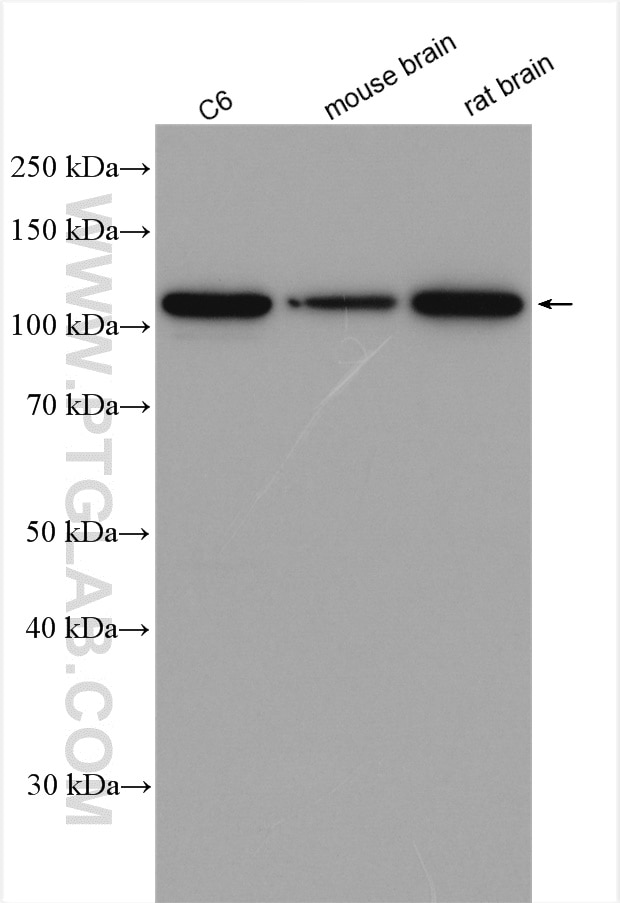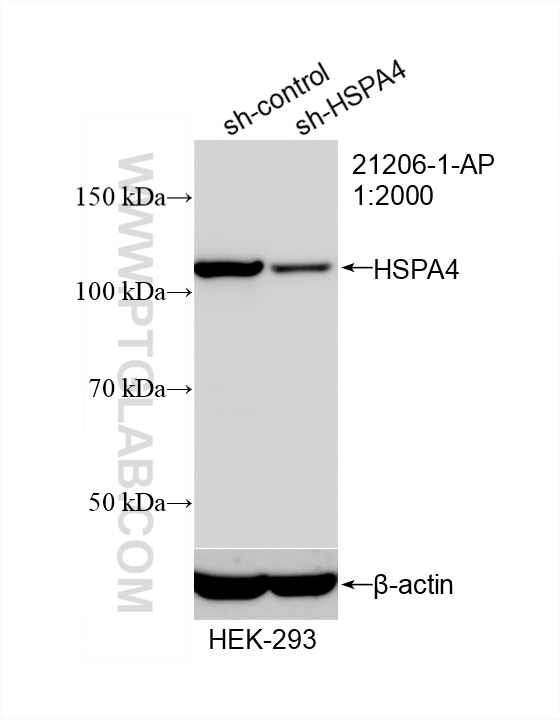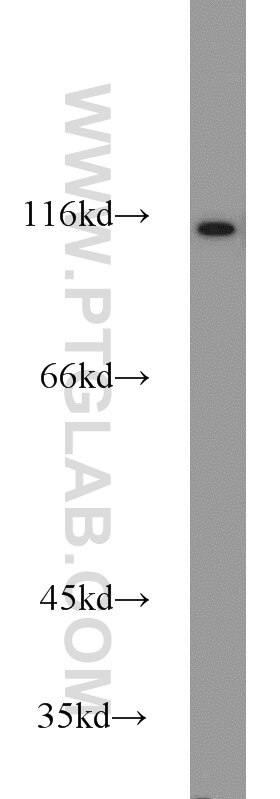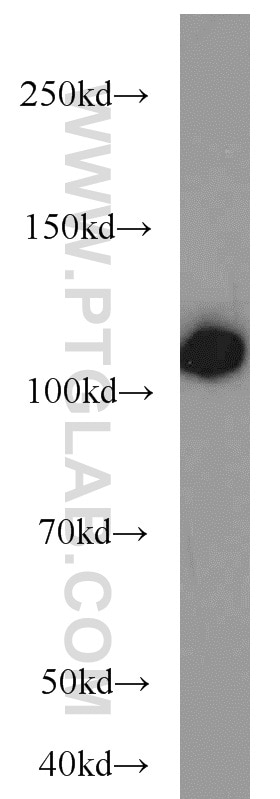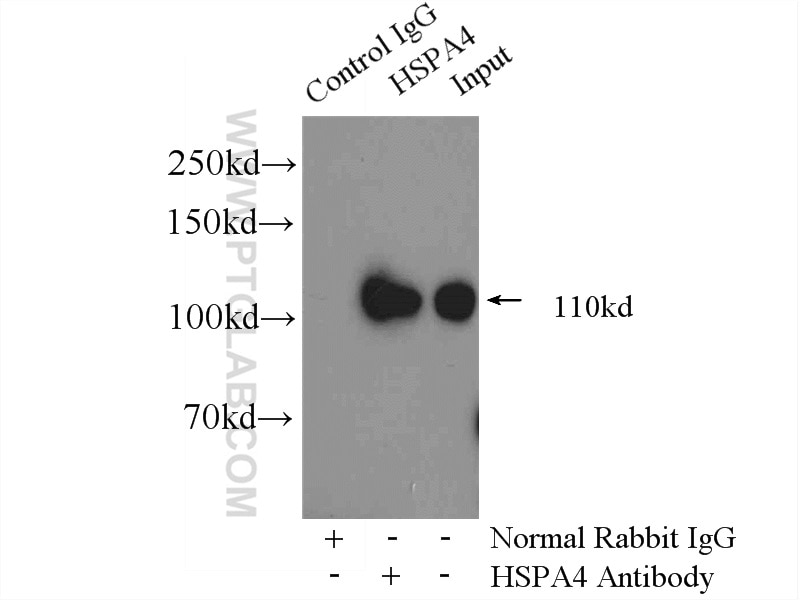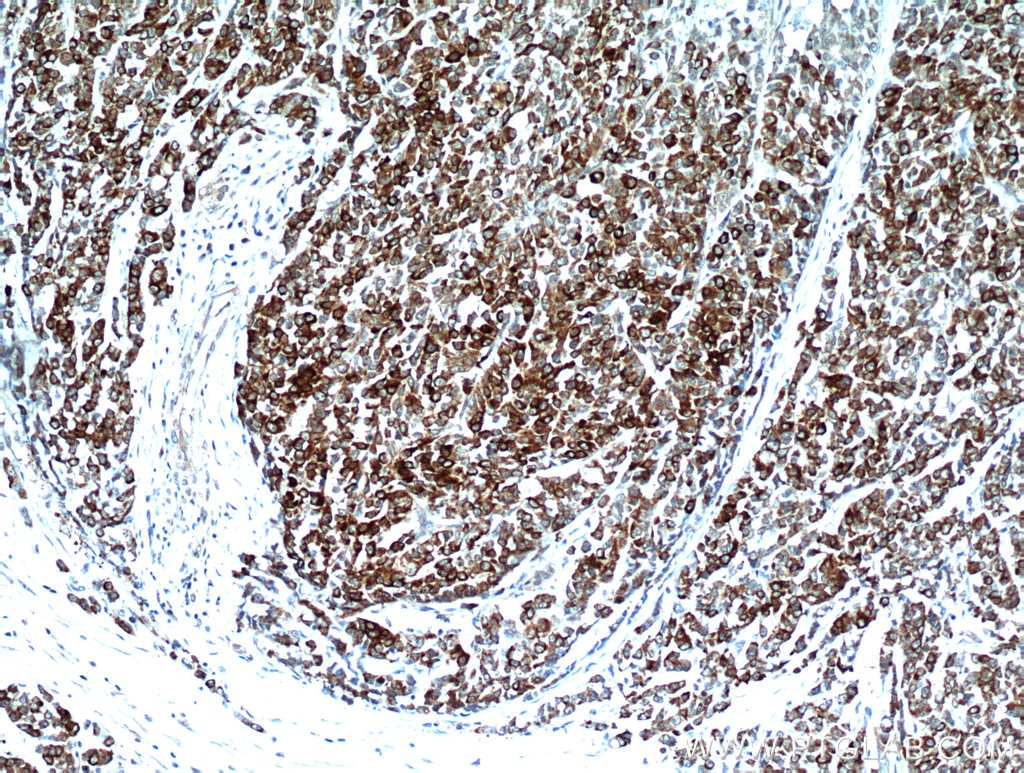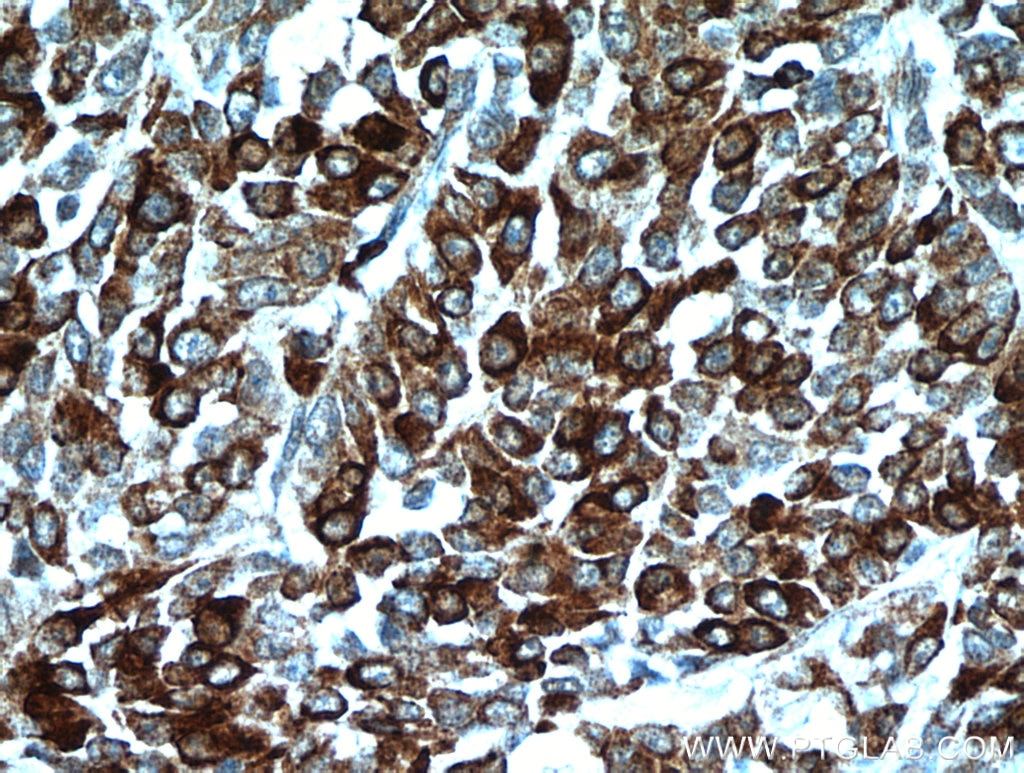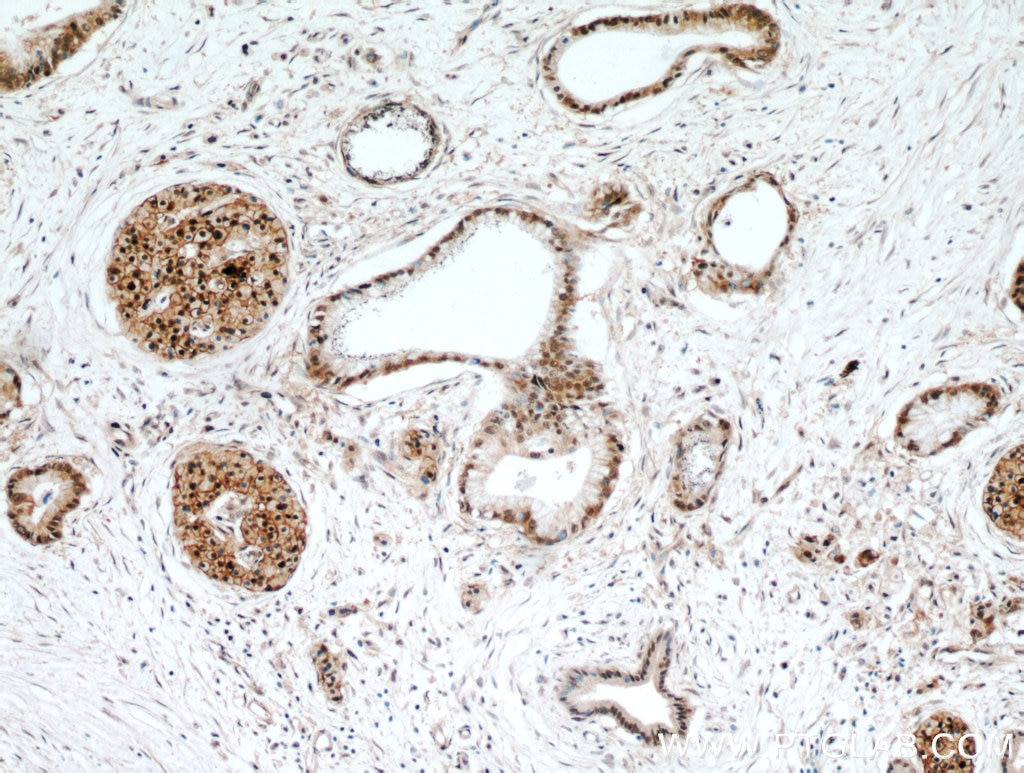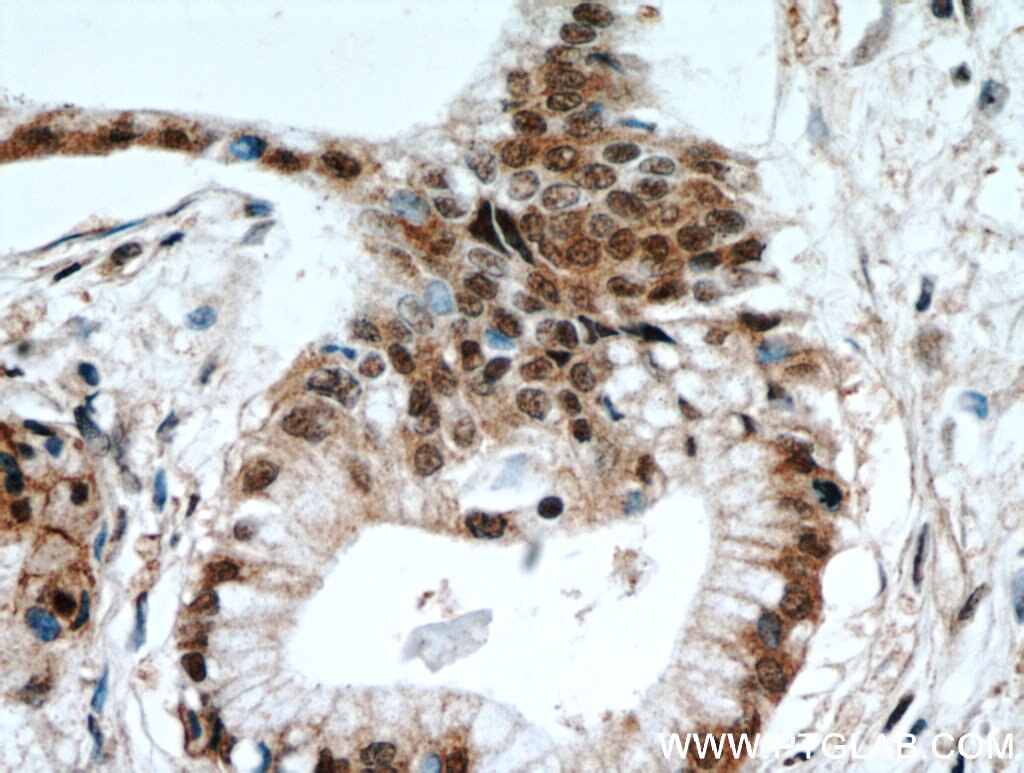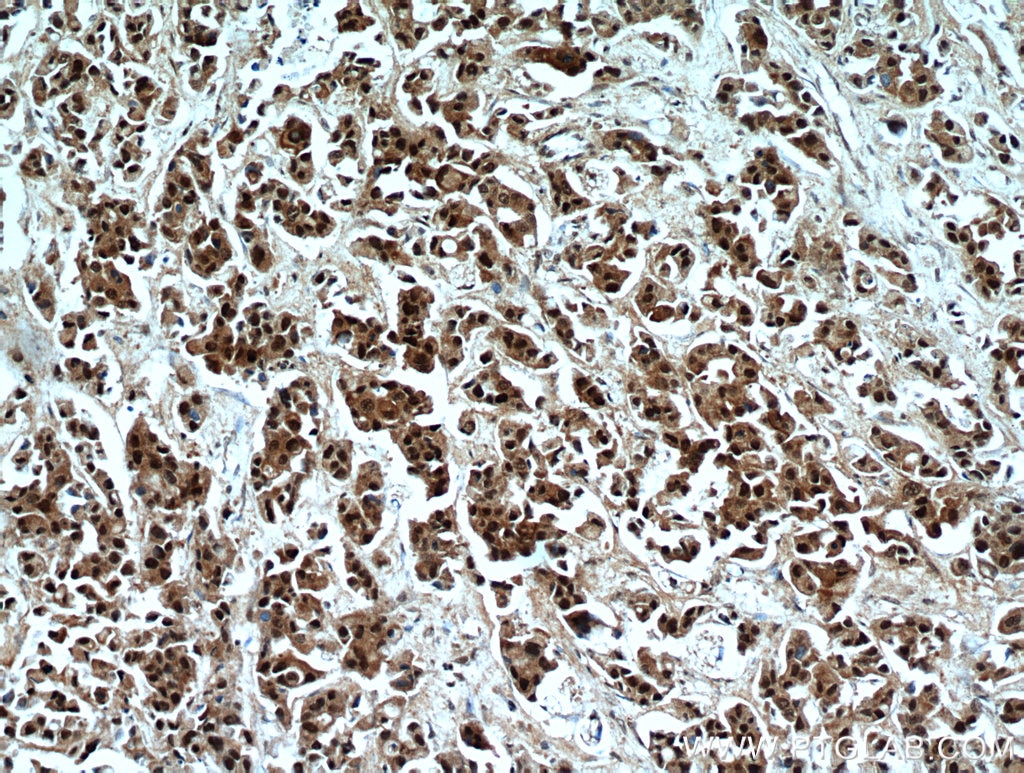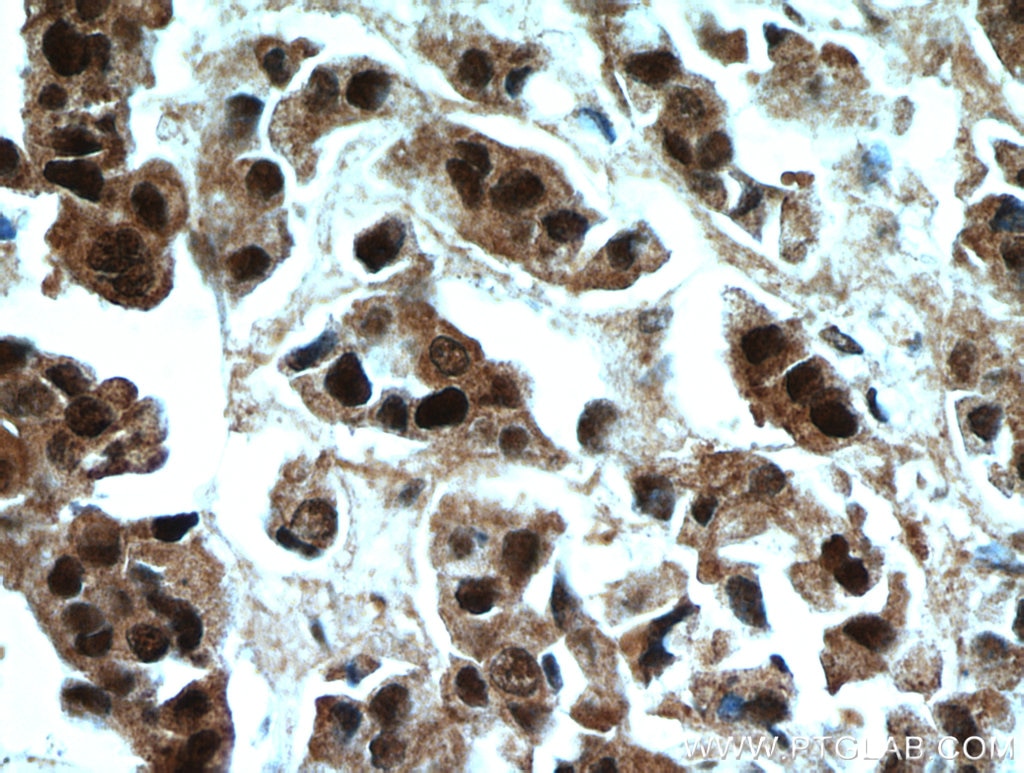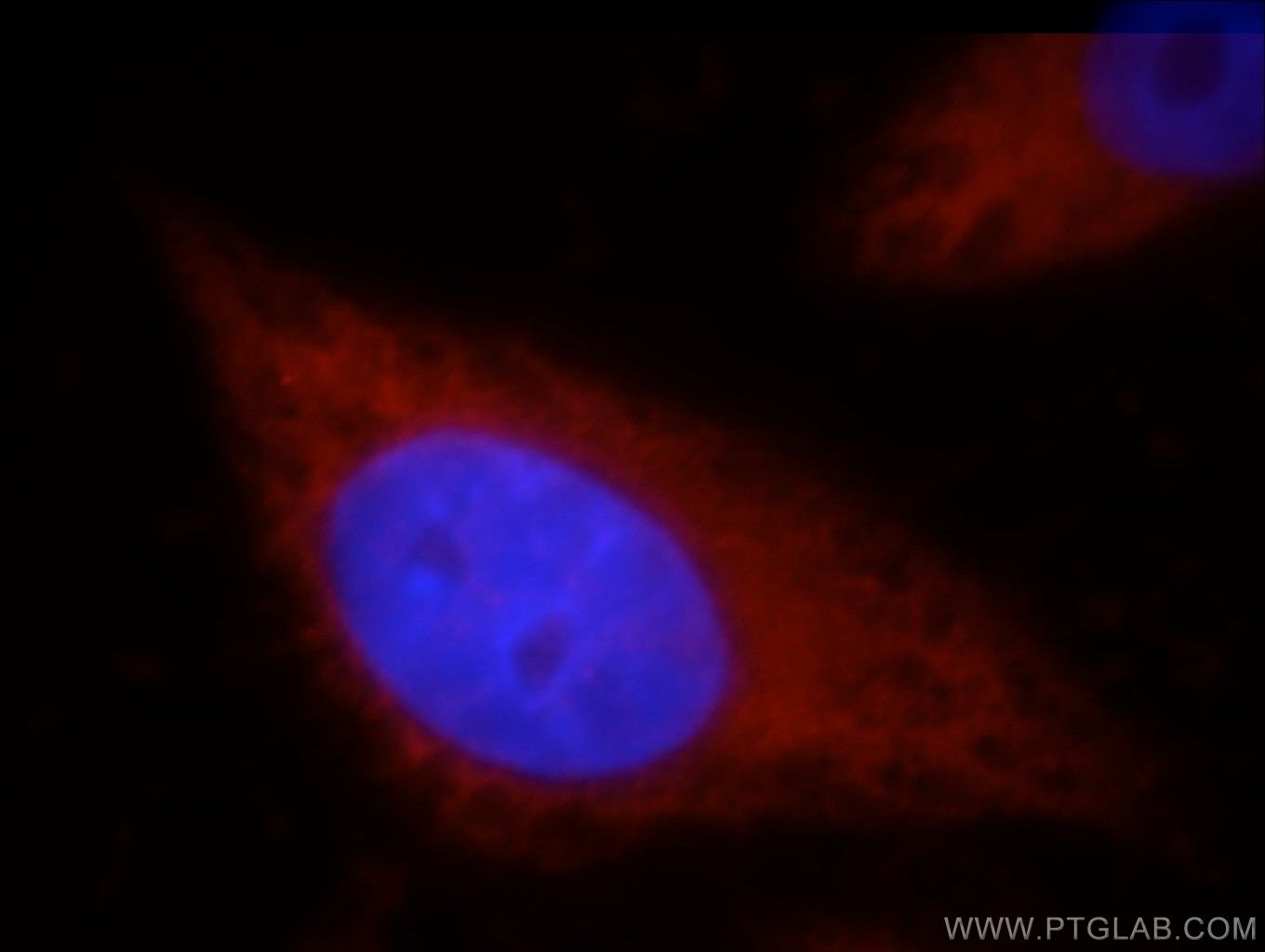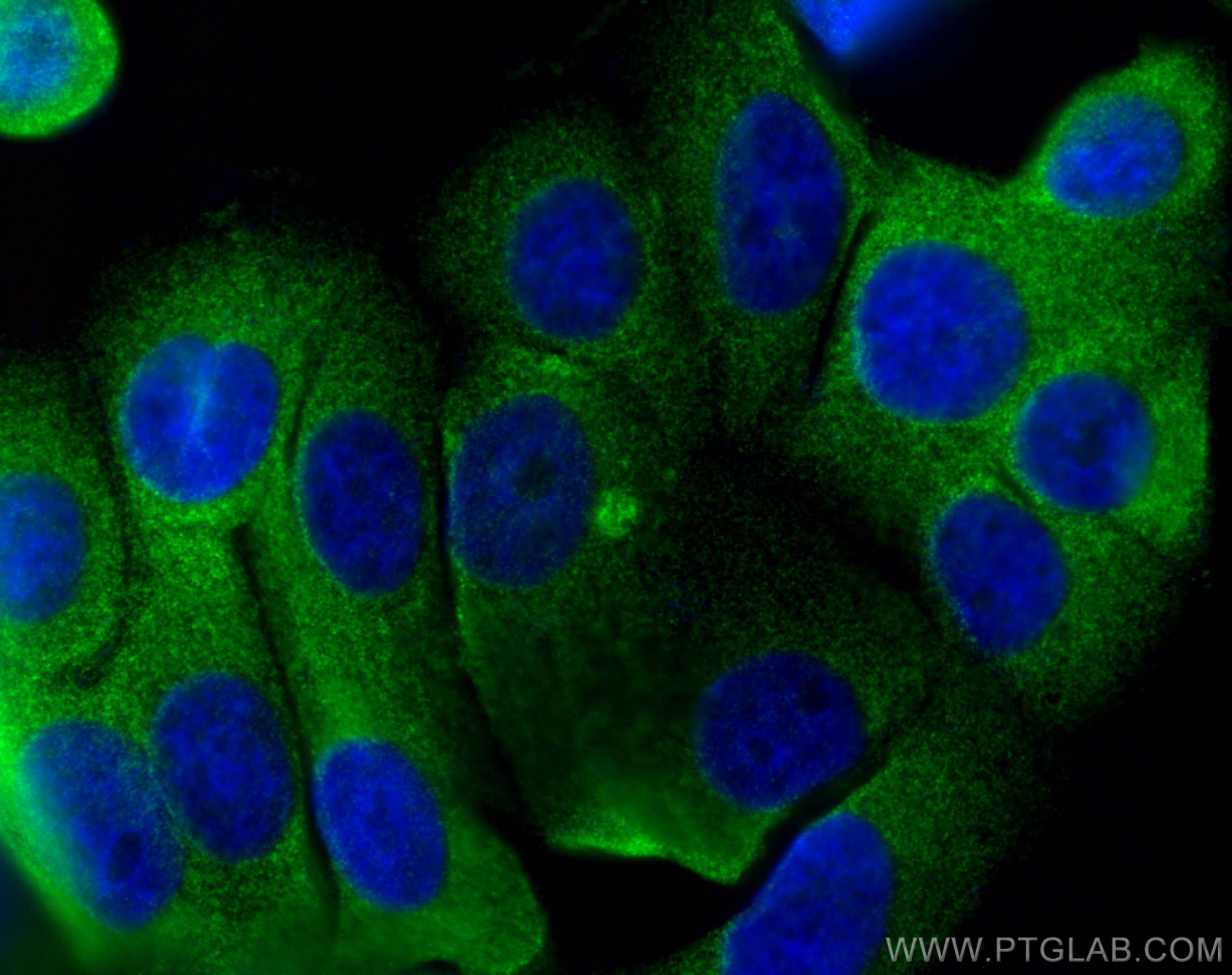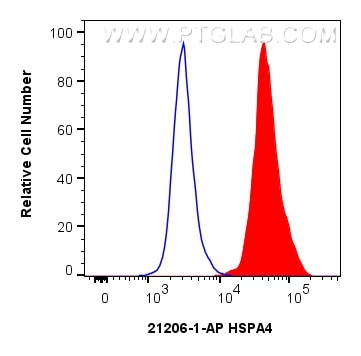- Featured Product
- KD/KO Validated
HSPA4 Polyklonaler Antikörper
HSPA4 Polyklonal Antikörper für WB, IHC, IF/ICC, FC (Intra), IP, ELISA
Wirt / Isotyp
Kaninchen / IgG
Getestete Reaktivität
Affe, human, Maus, Ratte
Anwendung
WB, IHC, IF/ICC, FC (Intra), IP, ELISA
Konjugation
Unkonjugiert
Kat-Nr. : 21206-1-AP
Synonyme
Geprüfte Anwendungen
| Erfolgreiche Detektion in WB | C6-Zellen, HEK-293-Zellen, Maushirngewebe, Maushodengewebe, NIH/3T3-Zellen, Rattenhirngewebe |
| Erfolgreiche IP | Maushirngewebe |
| Erfolgreiche Detektion in IHC | humanes Kolonkarzinomgewebe, humanes Mammakarzinomgewebe, humanes Pankreaskarzinomgewebe Hinweis: Antigendemaskierung mit TE-Puffer pH 9,0 empfohlen. (*) Wahlweise kann die Antigendemaskierung auch mit Citratpuffer pH 6,0 erfolgen. |
| Erfolgreiche Detektion in IF/ICC | MCF-7-Zellen, HepG2-Zellen |
| Erfolgreiche Detektion in FC (Intra) | C6-Zellen |
Empfohlene Verdünnung
| Anwendung | Verdünnung |
|---|---|
| Western Blot (WB) | WB : 1:500-1:2000 |
| Immunpräzipitation (IP) | IP : 0.5-4.0 ug for 1.0-3.0 mg of total protein lysate |
| Immunhistochemie (IHC) | IHC : 1:20-1:200 |
| Immunfluoreszenz (IF)/ICC | IF/ICC : 1:50-1:500 |
| Durchflusszytometrie (FC) (INTRA) | FC (INTRA) : 0.40 ug per 10^6 cells in a 100 µl suspension |
| It is recommended that this reagent should be titrated in each testing system to obtain optimal results. | |
| Sample-dependent, check data in validation data gallery | |
Veröffentlichte Anwendungen
| WB | See 5 publications below |
| ELISA | See 1 publications below |
Produktinformation
21206-1-AP bindet in WB, IHC, IF/ICC, FC (Intra), IP, ELISA HSPA4 und zeigt Reaktivität mit Affe, human, Maus, Ratten
| Getestete Reaktivität | Affe, human, Maus, Ratte |
| In Publikationen genannte Reaktivität | human, Maus, Ratte |
| Wirt / Isotyp | Kaninchen / IgG |
| Klonalität | Polyklonal |
| Typ | Antikörper |
| Immunogen | HSPA4 fusion protein Ag15581 |
| Vollständiger Name | heat shock 70kDa protein 4 |
| Berechnetes Molekulargewicht | 840 aa, 94 kDa |
| Beobachtetes Molekulargewicht | 110 kDa |
| GenBank-Zugangsnummer | BC110861 |
| Gene symbol | HSPA4 |
| Gene ID (NCBI) | 3308 |
| Konjugation | Unkonjugiert |
| Form | Liquid |
| Reinigungsmethode | Antigen-Affinitätsreinigung |
| Lagerungspuffer | PBS with 0.02% sodium azide and 50% glycerol |
| Lagerungsbedingungen | Bei -20°C lagern. Nach dem Versand ein Jahr lang stabil Aliquotieren ist bei -20oC Lagerung nicht notwendig. 20ul Größen enthalten 0,1% BSA. |
Hintergrundinformationen
HSPA4 (also known as Apg-2, HSP70RY) is a 110 kDa cytosolic protein, a member of the heat-shock protein 110 (HSP110) subfamily of HSP70 proteins which are highly conserved chaperons implicated in protein folding, protein refolding, protein transport, and protein targeting. HSPA4 is ubiquitously expressed and its expression is not heat inducible. Overexpression of HSPA4 has been reported in some leukemia and solid tumors. This antibody well recognized the endogenous HSPA4 protein in mouse brain/ testis tissues. (PMID: 21487003)
Protokolle
| PRODUKTSPEZIFISCHE PROTOKOLLE | |
|---|---|
| WB protocol for HSPA4 antibody 21206-1-AP | Protokoll herunterladen |
| IHC protocol for HSPA4 antibody 21206-1-AP | Protokoll herunterladenl |
| IF protocol for HSPA4 antibody 21206-1-AP | Protokoll herunterladen |
| IP protocol for HSPA4 antibody 21206-1-AP | Protokoll herunterladen |
| FC protocol for HSPA4 antibody 21206-1-AP | Download protocol |
| STANDARD-PROTOKOLLE | |
|---|---|
| Klicken Sie hier, um unsere Standardprotokolle anzuzeigen |
Publikationen
| Species | Application | Title |
|---|---|---|
Int J Mol Sci Comparative Hypothalamic Proteomic Analysis Between Diet-Induced Obesity and Diet-Resistant Rats | ||
Int J Biochem Cell Biol Folate deprivation induces cell cycle arrest at G0/G1 phase and apoptosis in hippocampal neuron cells through down-regulation of IGF-1 signaling pathway. | ||
Int J Mol Sci Quantitative Proteomic Analysis of Escherichia coli Heat-Labile Toxin B Subunit (LTB) with Enterovirus 71 (EV71) Subunit VP1. | ||
Int J Med Sci Exercise combined with trimetazidine improves anti-fatal stress capacity through enhancing autophagy and heat shock protein 70 of myocardium in mice. | ||
Mol Cell Proteomics A new cellular interactome of SARS-CoV-2 nucleocapsid protein and its biological implications |
